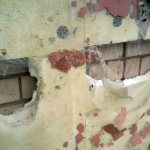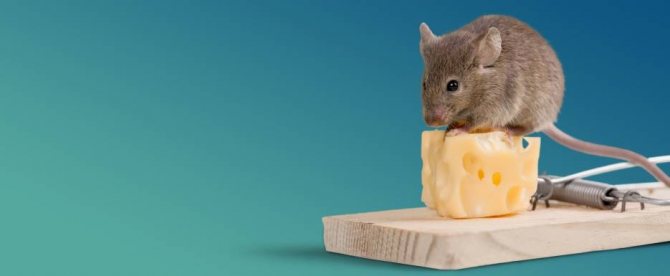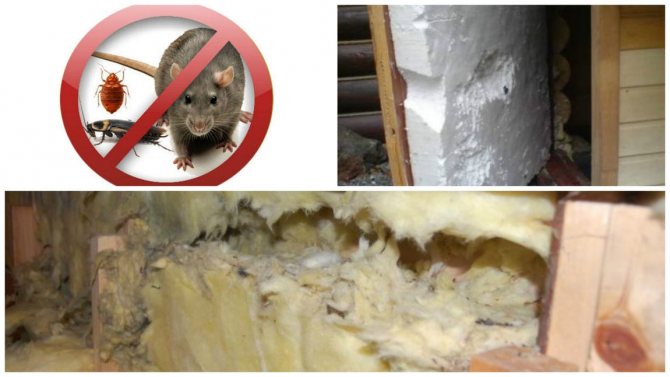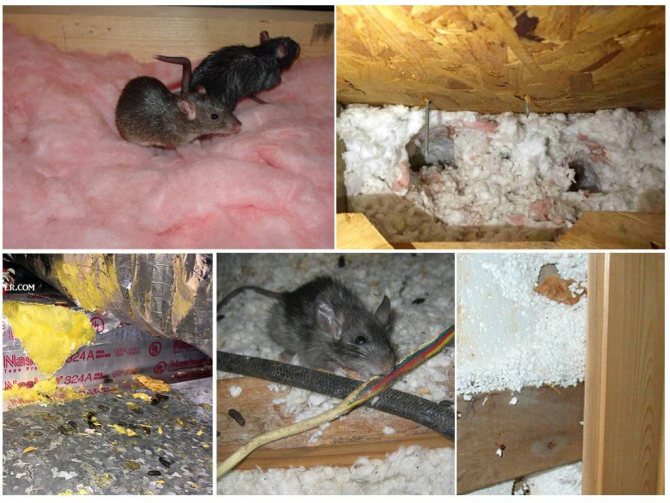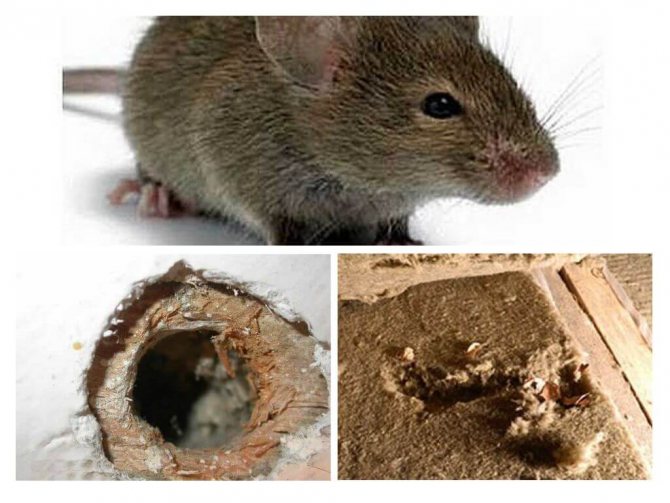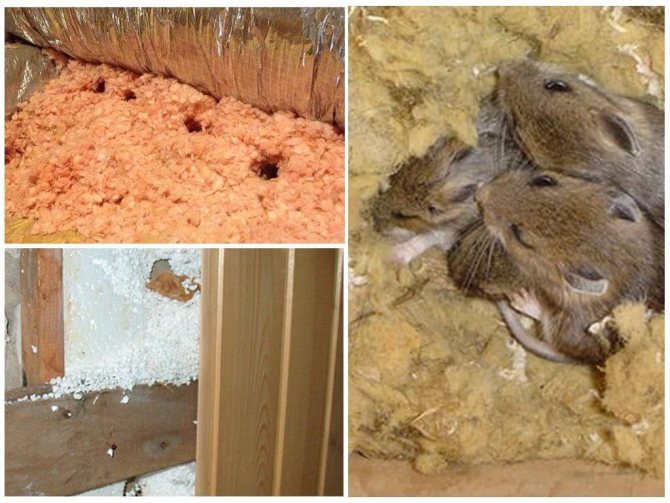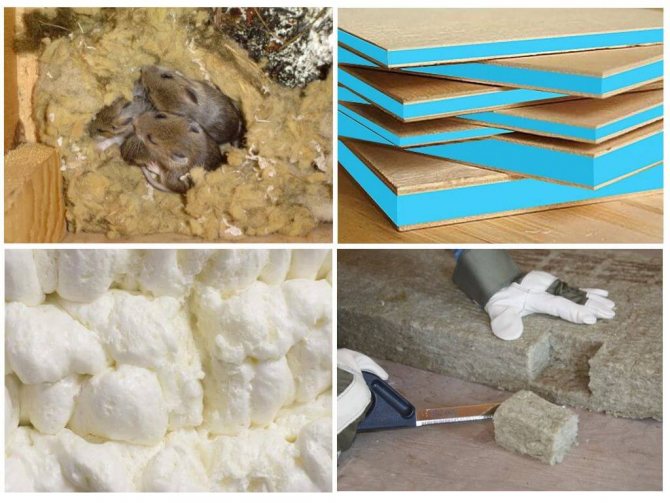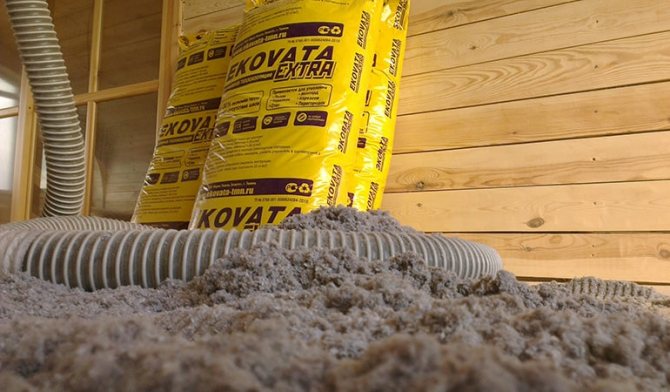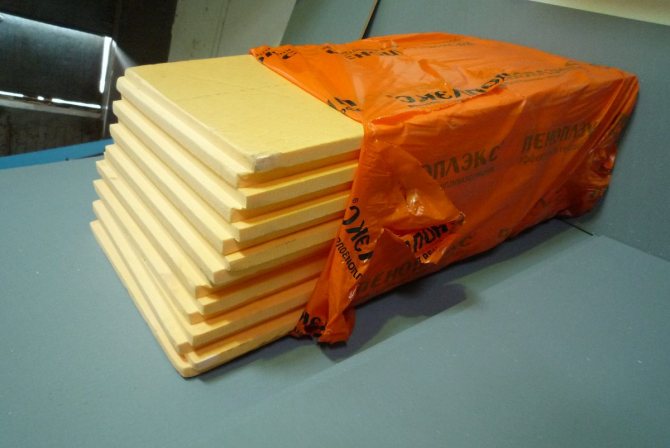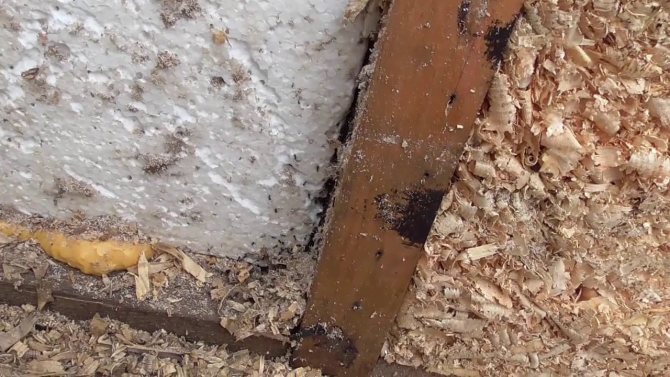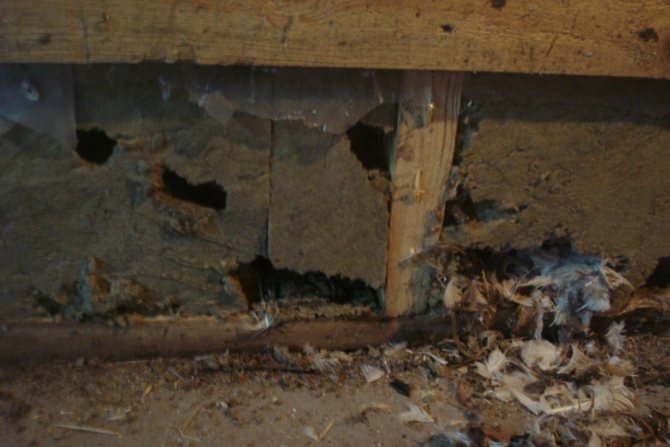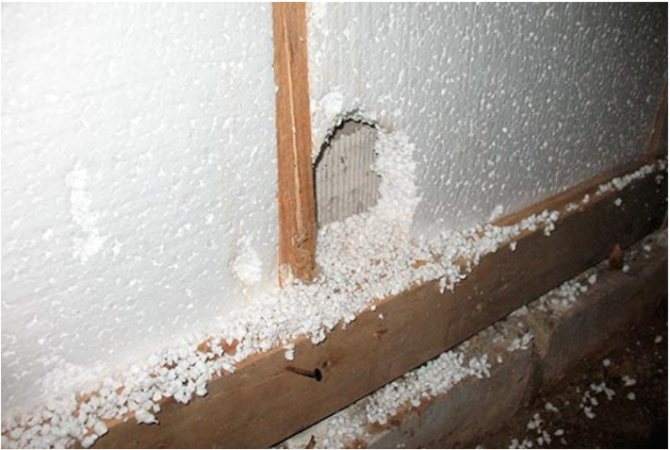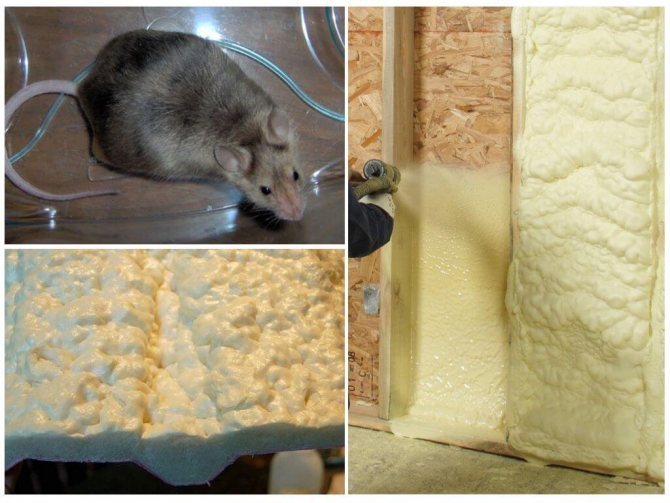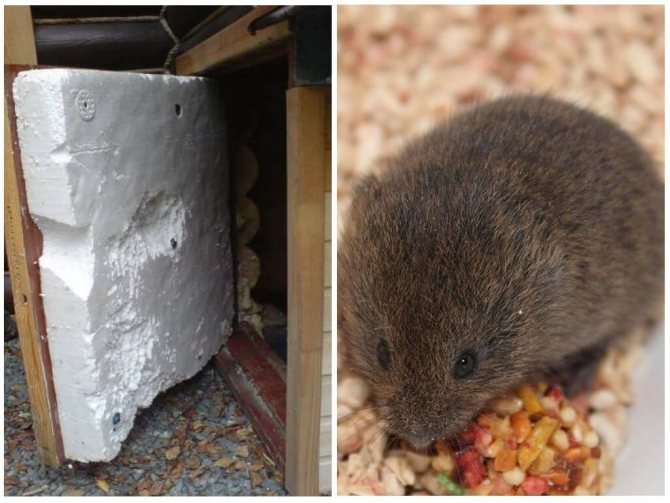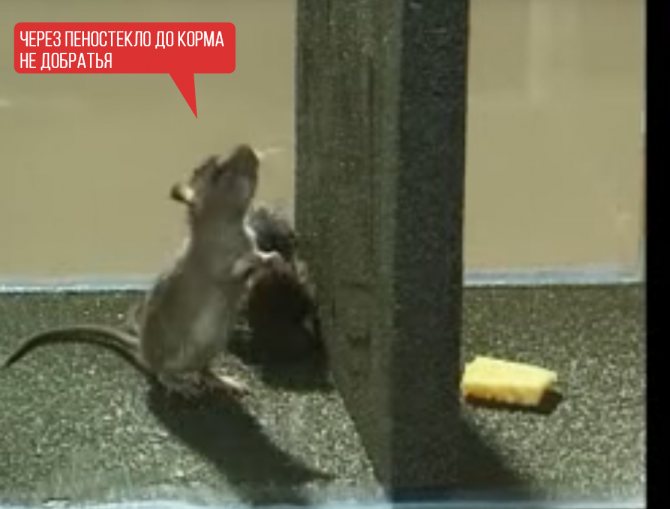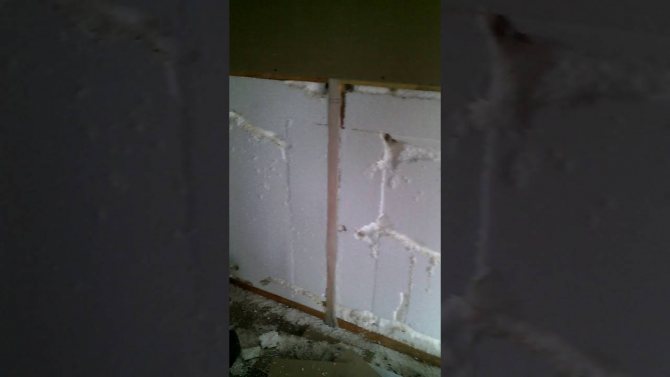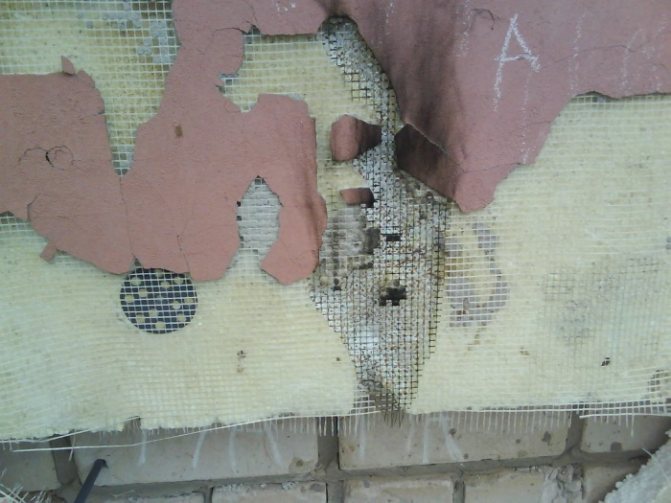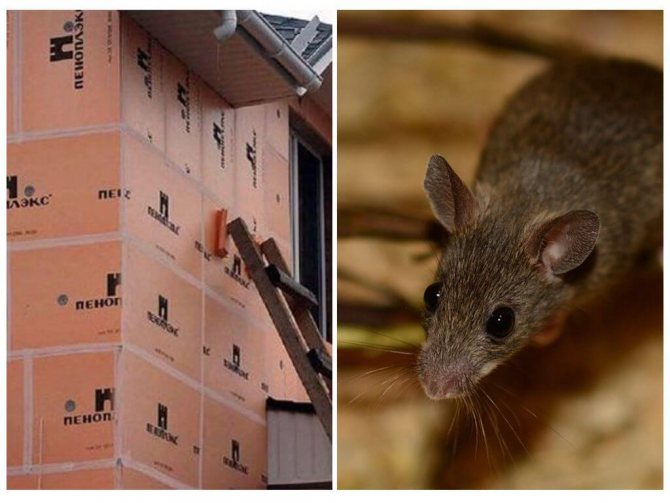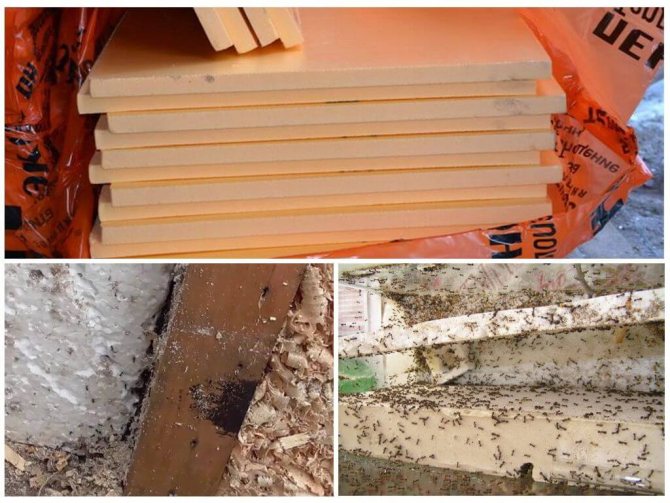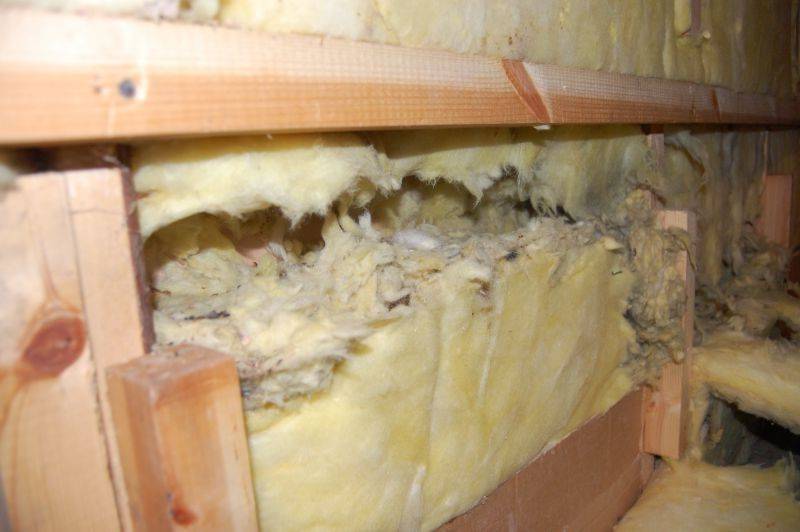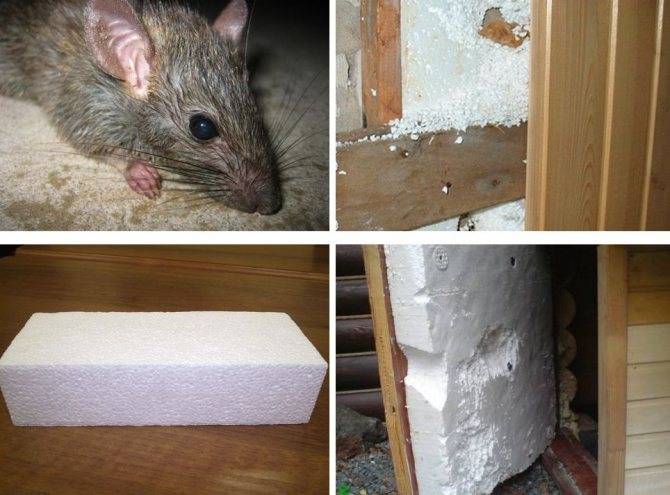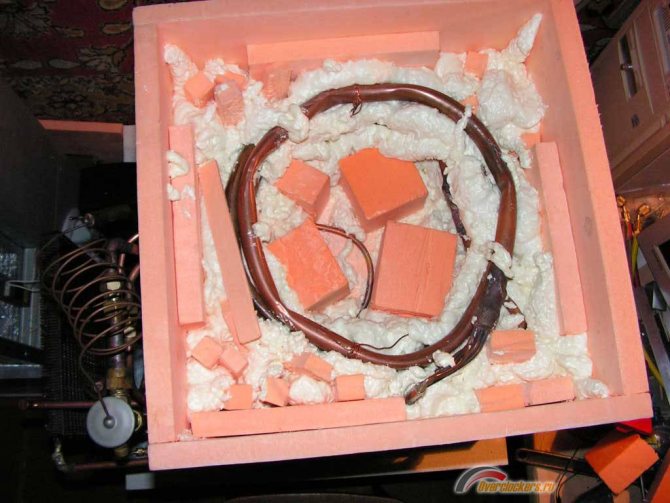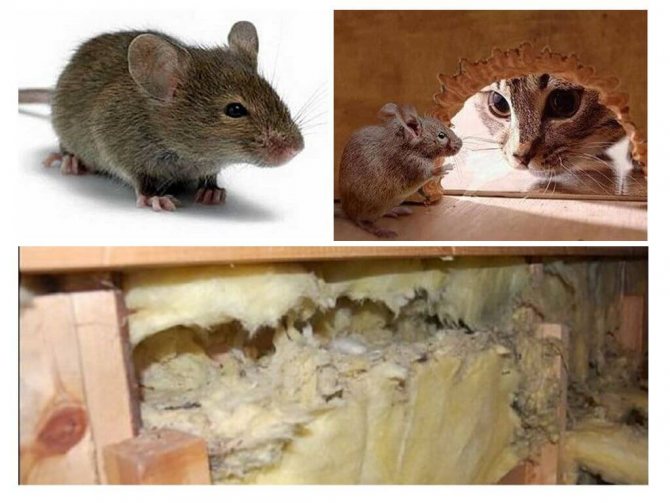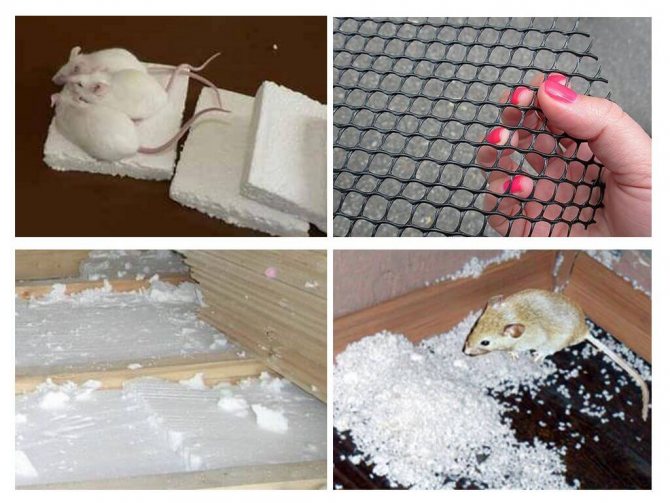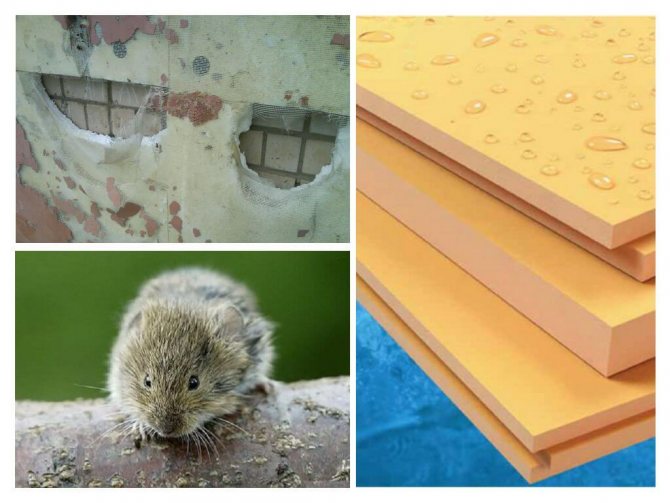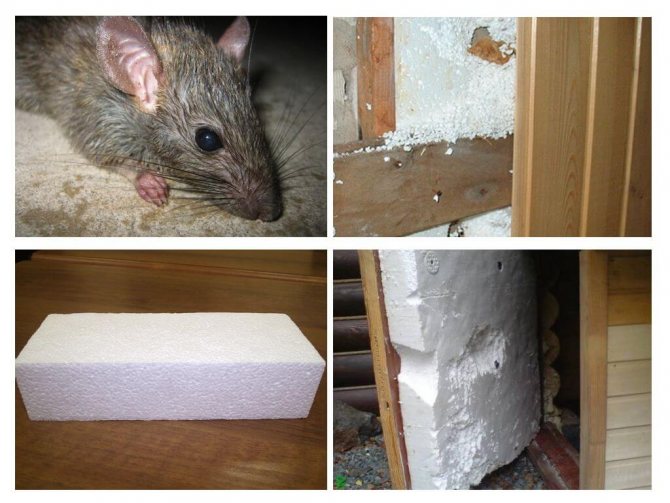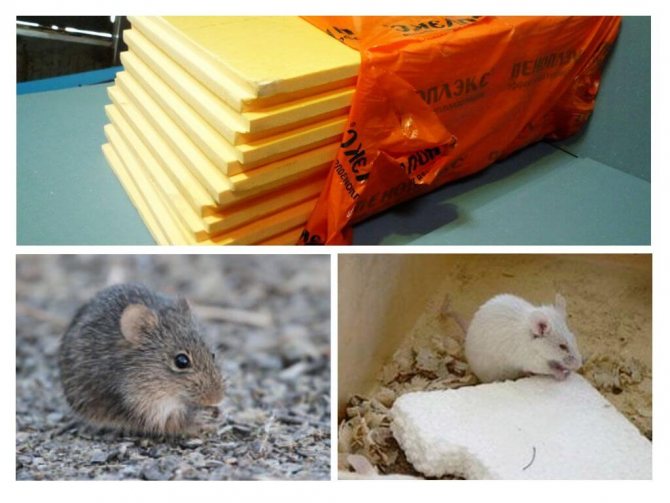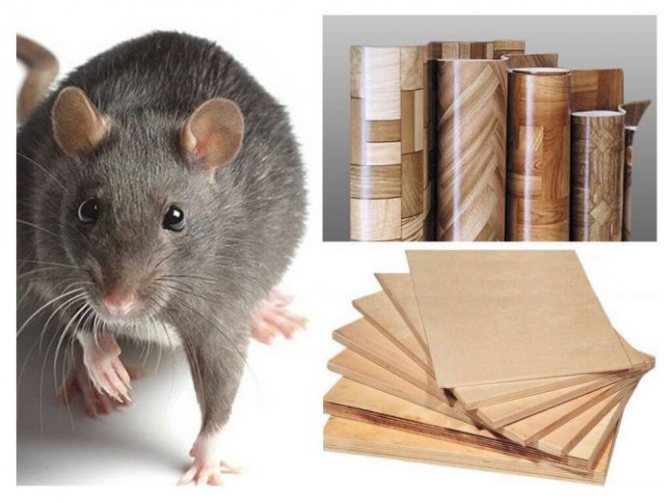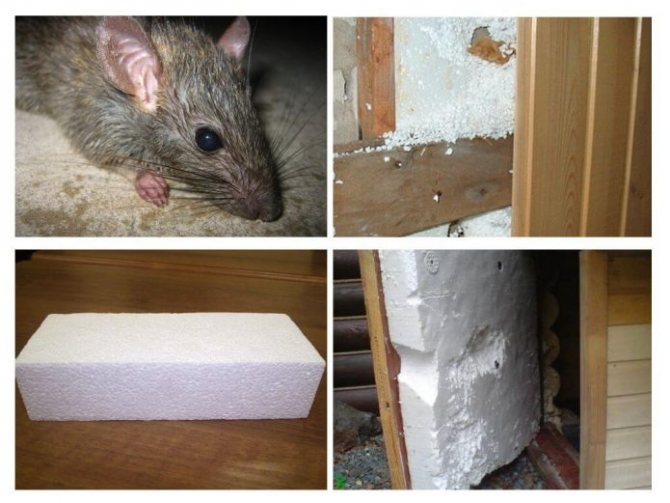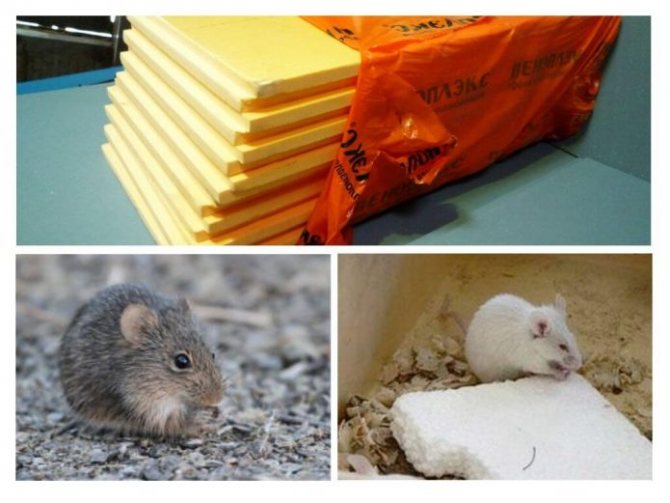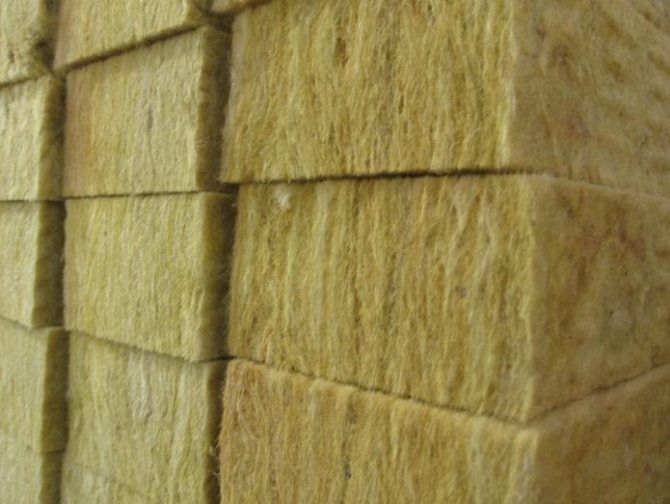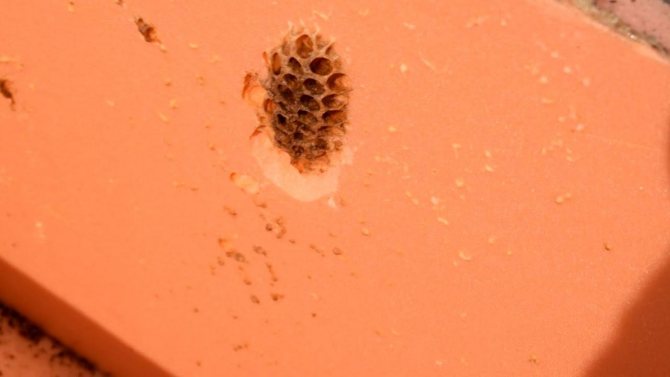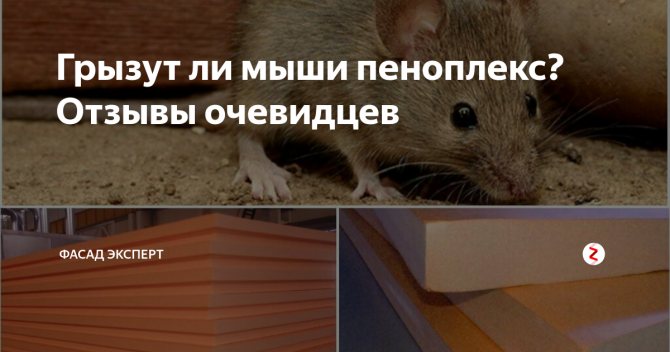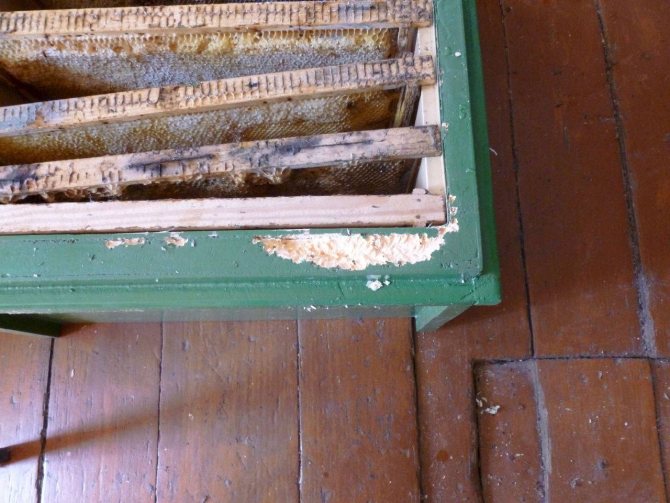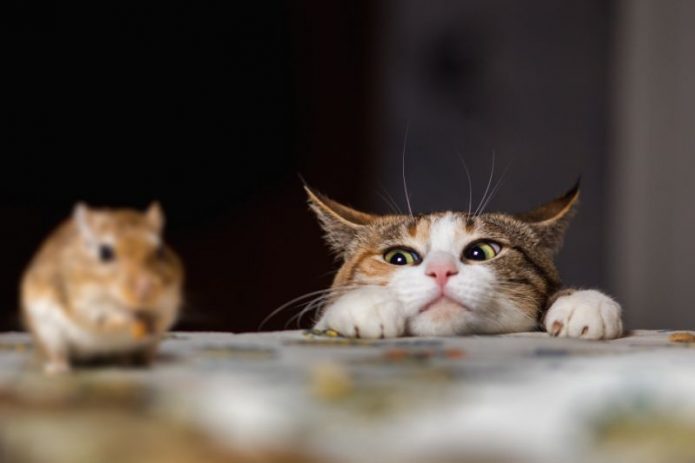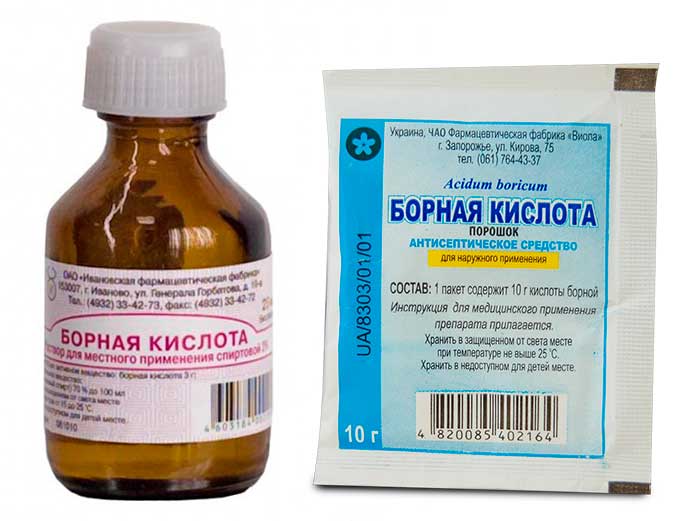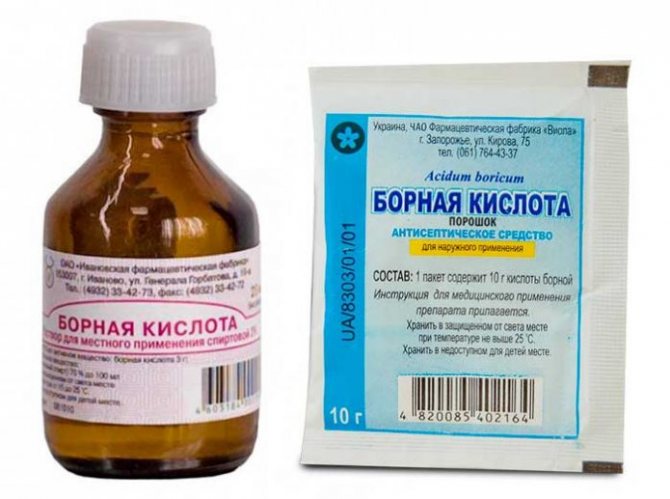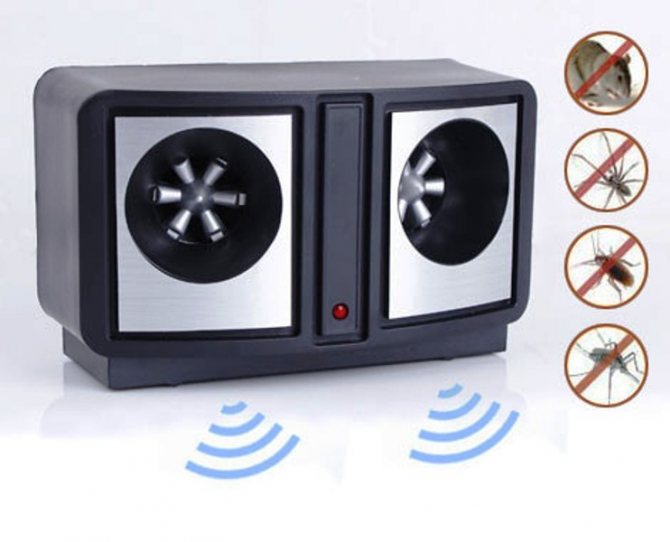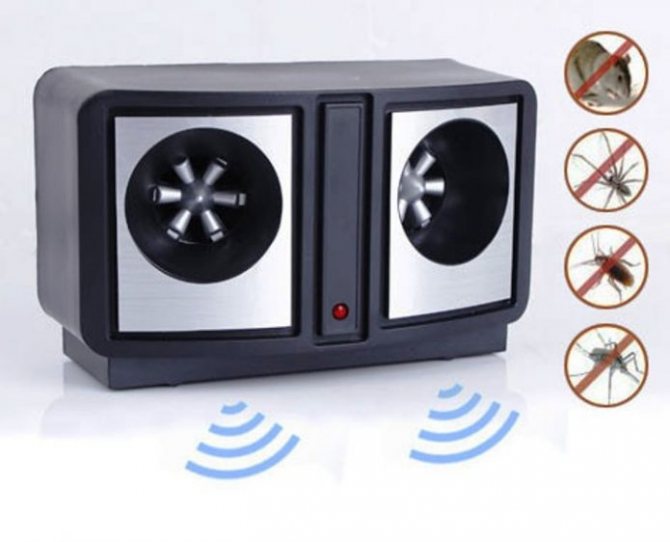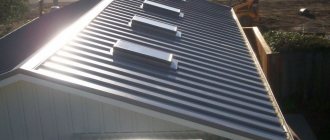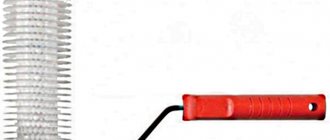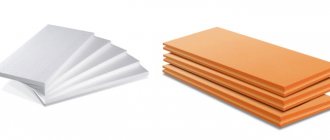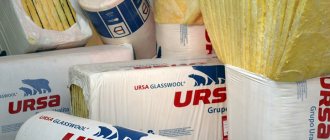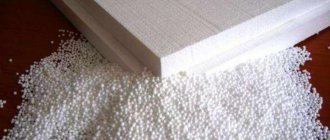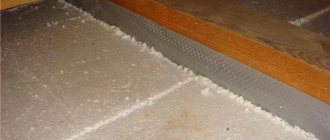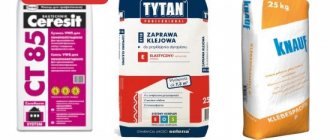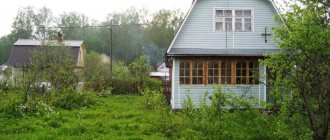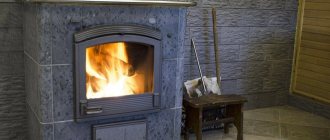What types of insulation mice do not eat
On the building materials market, consumers are presented with a rich assortment of heaters.
And what is important, there are materials that do not chew mice. But if gray rodents already live in insulation, then it will be very difficult to drive them out.
Foam concrete
It is a tough, yet lightweight and porous heat insulator. Rodents will not be able to gnaw holes in it.
Buildings made of foam concrete are very warm, durable and environmentally friendly for residents.
Please note: walls are insulated with foam concrete only from the outside, in order to avoid the formation of condensation and mold.
Expanded clay
Expanded clay is a very reliable, non-flammable and time-tested material. It is made from special types of clay. Granule sizes vary from 1 mm to 40 mm.
This insulation is used to insulate walls, interfloor ceilings. The habitation of rodents is difficult in expanded clay. It is difficult to move there, there is not enough air, small parts can clog the respiratory system.
Ecowool
In the production of this insulation, orthoboric acid is used. The acid can damage the lungs, dehydrate and even kill rodents. Ecowool is not a dangerous material for humans. Therefore, it can be used to insulate both external and internal surfaces.
The insulation has excellent functions of heat and sound conductivity, fire safety. The service life is at least 50 years. Ecowool is not subject to decomposition and decay processes.
Foam glass
One of the materials that rodents do not like and therefore do not start indoors is foam glass. It is produced by foaming glass and carbon black.
Thermal properties of the insulation do not deteriorate throughout the entire period of operation.
It is worth considering: so that the mice do not make their way into the house, it is imperative to use high-quality cement mortar and take care of the tightness of the seams by processing them.
What heaters are susceptible to rodent teeth
During the construction and insulation of premises, materials with excellent thermal insulation properties are used. However, there are reviews from builders and house owners, confirming that heaters have drawbacks.
Penoplex and extruded polystyrene foam are high-tech materials. They are used in industrial and civil construction, when laying the bed of railways, highways and runways. These materials are of high density. Therefore, rodents will not equip their homes in it, but they can gnaw.
Basalt, mineral wool and glass wool are also unstable material for damage by mice. In search of food, rodents will make holes and passages in the mineral wool. This soft material will not be able to stop small pests.
Watch a video in which a specialist tells what is better to choose a heater so that mice do not start in it:
What kind of insulation mice do not start
Above, we figured out the most popular materials for insulation and found out that all of them are not an obstacle for small pests. But science does not stand still. Materials began to appear on the market that are not so easy for the teeth of mice and rats.
At the same time, many characteristics of heaters have been improved.
What are these new generation materials? These are such heaters as ecowool, foam glass, expanded clay. Let's start our review with ecowool. This is a cellulose-based insulation with the addition of an antipyrent and an antiseptic. It can be assumed that rodents will like such a soft and warm material, but the secret is that during the production of ecowool, orthoboric acid is added to the composition, which is completely harmless to humans, but causes persistent suffocation and dehydration in mice and rats.
Its advantages:
- Excellent thermal insulation ability;
- Low breathability;
- High coverage density;
- Fire safety;
- Moisture resistance;
- Easy to use and durable;
- Perfect harmlessness to humans.
No less interesting in terms of the issue under consideration is such a relatively new insulation as foam glass.
produced by manufacturers, both in slabs and in loose version. It is made by melting glass and then foaming it. This material is very durable, so neither mice nor rats are able to chew on it. In this case, it does not matter in what form the foam glass is: in blocks or in bulk. On top of that, in the bulk version, mice are also quite difficult to move around. Along with the above function of strength, which does not allow small pests to gnaw and settle inside this heat-insulating material, it has all the same characteristics as ecowool with a difference in coefficients and composition.
To prevent the mice from getting into the insulation, it should be tightly closed with finishing materials.
At the same level as foam glass and ecowool, the expanded clay insulation, which has long proven itself in construction, is also located, although it does not belong to new products on the market. It is a porous material obtained by firing special types of clay. It is produced both in the form of large gravel-like granules and in the form of sand. But expanded clay is much lighter than them, since during the firing process a maximum of moisture evaporates from it. In addition to high thermal insulation characteristics, this heat insulator has excellent sound-absorbing properties, it is also very durable, capable of withstanding mechanical stress. It is for the latter reason that expanded clay is inconvenient for mice and rats to live in the thickness of the thermal insulation. In the fine fraction of expanded clay, rodents will simply drown, they will not have enough air, and due to its special hardness, it is not suitable for the teeth of pests.
Source: teploclass.ru
Penoplex45
This type is widely used not only in private construction, but is also in demand in the construction of roads, runways and airfields, since its density of 45 kg / m3 is the highest. These panels provide reliable frost and thaw protection for a smoother surface and less damage. Playgrounds and even parking lots should be created when constructing roofs on them designed for heavy traffic.
Manufacturers and dealers talk about material safety all the time, but is it? Is the foam complex harmful to health?
Many argue about the environmental friendliness of this material and claim that it itself has fire retardant properties and is subject to combustion. It is impossible to argue, because many people cannot resist the fire of the objects around us.
It's another matter whether it can ignite itself or contribute to a fire. The question is clear - no. But at the moment of ignition, it forms a lot of corrosive smoke and emits toxic substances. However, it burns slowly, so it will take some time before burning and the fire can be extinguished in time.
Another disadvantage that negatively affects the human body is the destruction of the material that occurs under unfavorable operating conditions. Penoplex not only loses its properties, but also oxidizes and begins to release toxins into the air. This happens when poor quality products are selected or installation rules are violated.
Therefore, it is important to choose only those materials that are produced using this technology, to follow the rules during installation and not to use incompatible connections. Only under these conditions will it serve its purpose without harming a person.
About penoplex
There are many types of insulation, each with its own pros and cons. Penoplex is an extruded material. The extrusion method is uncomplicated. Under the influence of high temperature, under strong pressure, granular polystyrene is foamed, from which smooth boards are then made.This is a finely porous material in which cells isolated from each other are located. They are filled with air.
Why do many people choose penoplex for building a country house? The advantages of this material:
- It is inexpensive.
- Differs in special strength and reliability.
- It has a reduced level of thermal conductivity, so penoplex is better than many heaters.
- It prevents the penetration of moisture, only 2 cm of this insulation is the same in terms of vapor permeability as roofing material. But it absorbs moisture where the cut is, because at this point, the cells lose their integrity.
- This material does not rot or decompose, it does not contain mold, i.e. it is biostable. But, despite this, it is highly environmentally friendly, although some disagree with this statement. If there is a fire and the material ignites, harmful substances are released. But penoplex cannot ignite on its own. It is easy to cut and can be installed regardless of weather conditions.
- It has served, considering various influences, fifty years. But studies were carried out in which the material was frozen and then thawed. Even in such harsh conditions, he withstood, and confirmed his warranty period with a margin.
- Does not dissolve, does not change shape if exposed to alcohol-based paints, chlorine, cement mortar, etc.
In order for these useful properties to be preserved, it is important to buy quality products and install them correctly. If these conditions are not met, it loses its properties, oxidizes and even releases toxins.
Penoplex regularly serves the owner of the house for 50 years or more
There are several types of penoplex, which differ from each other in different characteristics. There is Penoplex Foundation, with special strength. Penoplex wall is made with fire retardants, so this material will not immediately ignite. Inside, they are rarely insulated, in the event that it is difficult to do it outside. If they work with it indoors, they choose thinner plates to make it easier to work. There is also Penoplex Roofing, which can withstand heavy loads. Such a roof will last a long time, even if it is a flat version, and then a flower garden was broken on it. There is also the universal Penoplex Comfort, which is used everywhere.
Why do mice like to settle in penoplex?
Penoplex (extruded polystyrene foam) is a fine-porous material with numerous air-filled cells. Insulation is inexpensive, but at the same time it is distinguished by its strength, low level of thermal conductivity, moisture resistance and resistance to fungal infections. It is also important that polystyrene plates do not swell and do not warp when painting, processing with glue or plaster. If the basic rules are followed when installing thermal insulation and the insulation is protected from rodents, it can last fifty years or more.
Mice appear in the house in the fall, with the onset of the first cold weather, when there is already nothing to profit from in the fields. It's time to think about making a warm mink and affordable food. Penetrating through cracks, holes, ventilation openings in a human dwelling, the animals easily gnaw through pliable polystyrene.
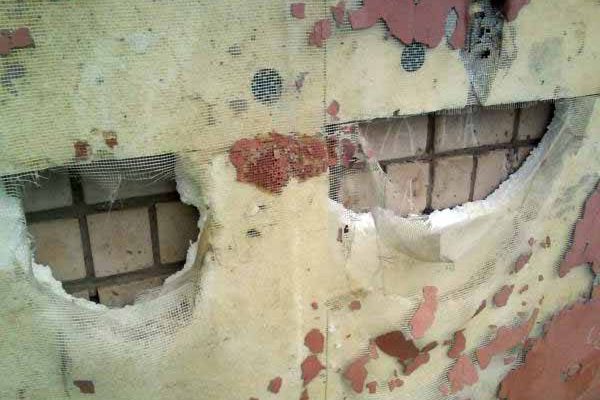
As you know, rodents do not eat synthetic insulation, but feed on food and waste. Polystyrene plates are just an obstacle on the way to the desired food, which can always be found in a summer cottage closed for the winter, in a trash can or in the kitchen of a careless hostess. Gnawing through the labyrinths in the insulation, the mice thereby destroy the structure and reduce the functionality of the material, literally turning it into dust. In this case, the damage can be more than 80%.
Mice, unlike rats, move in groups and live in families. If one individual appears in the house, a dozen more will come running after it.Therefore, when you hear a characteristic crunch or squeak, you must immediately take action.
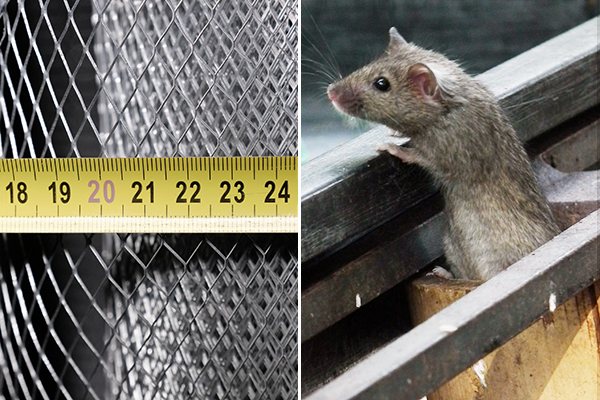

As an afterword
What advice can be given to the owners of summer cottages and country houses if they have a problem - mice are gnawing on styrofoam (expanded polystyrene). First, don't panic. A mink discovered in time should serve as a signal for immediate action. Check your home regularly for rodents, be vigilant. Thus, you can avoid serious problems and equally serious costs.
Secondly, if you have the opportunity, when building a house and insulating it, do not forget to cover a layer of expanded polystyrene with a protective fine-mesh mesh. Thus, you protect the expanded polystyrene not only from rodents, but also from birds, which can also cause damage.
Third, take the advice of a seasoned homeowner and install an ultrasonic mouse and rat repeller. Believe that the costs will not be in vain and will pay off with interest. The device is not that expensive, it is quite efficient and does not need much maintenance.
Don't forget about the cat. There may even be several of them if you have a large farm. Our grandparents always kept a cat in the house and were happy with the result. Cleanliness is not only a guarantee of health, but also a guarantor of your quiet life at a summer cottage. Mice eat what you throw them, eat with gusto, eat a lot - don't forget about it!
In addition to eating insulating material, they can infect you with some kind of infection (hemorrhagic fever, for example). Therefore, after the extermination of mice, be sure to thoroughly disinfect. It is better not to do this yourself, as there is a risk of chemical poisoning. There are specialized companies dealing with vermin control. They will qualitatively destroy rodents and disinfect the territory.
"Please, another time" - heaters that do not gnaw
The forks of insulation materials listed below, for one reason or another, are not interesting to rodents:
Concrete-based materials benefit from strength. Ecowool contains orthoboric acid, which is added to the composition so that the organic insulation does not rot. It is she who protects the material from pests.
So, at the beginning of the article, we had three tasks: to find out what can be used to insulate the house so that mice and other rodents cannot get into the insulation, how to process the material so that it is not interesting for mice, and how to remove pests if they are already visiting. We noted that:
- Mineral wool and foam are attacked;
- Around the insulated area, you need to arrange a fencing structure - for example, the foam can be plastered without leaving even a small gap;
- Material treated with insecticidal agents or orthoboric acid repels pests;
Whatever the material has been processed, mice will not appear in the insulation for sure only if it is covered with a protective layer. Protected in this way, the material will properly serve its purpose.
I wish you good construction and only invited guests to the house!
What is foam insulation?
Disadvantages and advantages of foam glass
Dowels for fastening insulation. 3 types, 3 mounting options
Rodent Resistant Insulation
There are materials for home insulation that are not attractive to pests or are inaccessible to their teeth. These include foam ceramics and foam glass, gas and foam concrete, expanded polystyrene concrete, vermiculite, expanded clay, perlite, ecowool, cellulose materials, drywall, linen fiber mats. Aerated concrete can be partially damaged by rats. They are able, if desired, to gnaw a little and simple concrete, but they will not be able to do much harm to the insulation material or settle in aerated concrete.
Foam glass is strong and durable, so it is not afraid of the teeth of even large rodents.Inorganic compounds, minerals and fired clay serve as protection against pests in the structure of vermiculite, perlite and expanded clay. It also includes bulk materials, it is impossible for rodents to live in them.
Vermiculite perfectly absorbs mouse odors, prompting the animals to leave the house. Ecowool is pure cellulose and can be digested by rodents. But they do not touch the material, since it contains borax or orthophosphoric acid. Linen fibers are filled with lignin, which repels gray creatures. Like orthophosphoric acid, it dehydrates them.
Drywall contains a small amount of lime and partially repels pests. If they want to, they can gnaw through the partition from it and damage the profiles.
What is the attractiveness of the material
But really, why do mice gnaw on styrofoam? There are at least five reasons for this.
- Everything is elementary. A plastic material with excellent thermal insulation properties is ideal not only for insulating a person's home, but also for arranging rodent nests, where they settle without a twinge of conscience. Other building materials have similar properties: penoplex, expanded polystyrene, which mice gnaw for the same purpose.
- Even if the gray animals are not going to live in foam, they will still use it to create their own labyrinth. Beaten paths are corridors along which you can ply without fear between the nest and the kitchen or pantry, where many tasty and edible human supplies are stored.
- The constant growth of the incisors causes the animals to gnaw on the surrounding objects.
- House mice can damage the material in stressful situations: for example, with a strong noise, as a result of a sharp increase in the number of individuals in the population, when the struggle for food and shelter begins.
- Exploratory behavior: it has long been proven that when in contact with new and unknown, rodents try to try an object that is unusual for them with a tooth.
Endurance test
A group of scientists, trying to find out if mice eat extruded polystyrene foam, conducted a small experiment. The essence of the experiment is simple - to force hungry voles to use the polymer as food. As it turned out, the gray bandits were not going to eat synthetics, but they actively removed the obstacle with their teeth if there was water and food behind it.
The research activity did not end there and the scientists continued the experiment. This time, the mice were “asked” to choose different materials for the construction of nests, among which was expanded polystyrene. His rodents, although they chose the last thing after the depletion of stocks of paper, burlap, but did not ignore it at all. So, empirically, an answer was obtained to the question: do mice gnaw polystyrene foam?
It is worth noting that such studies are carried out not for the sake of curiosity, but at the request of manufacturers who need to know about the resistance of new building materials to damage by rodents - there is even a corresponding GOST.
Often on the network you can find reports of test results from reputable companies that understood the question of whether mice gnaw penoplex? So, as a result of the study, it was found that the experimental animals damaged the foam plates during the first day.
Results of studying the damageability of extruded polystyrene foam (above the line) and granular (below the line) by rodents when kept alone by the method of compulsion.
| View | Number of rodents, pcs | Animal condition | Sample damage rate in% by days | ||||||
| Age, months | Weight, g | 1 | 2 | 3 | 4 | 5 | |||
| House mouse | 5 | 4 | 16,5 | 10/50 | 20/60 | 0/80 | -/40 | -/70 | |
| Common vole | 5 | 3 | 14,5 | 30/40 | 5/50 | 10/30 | 5/60 | -/50 | |
In addition, during the experiment, the researchers came to the conclusion that it is possible to increase the resistance of the material to gnawing by increasing the smoothness and density of the surface of the slabs.The fact is that the roughness at the edges greatly facilitates the possibility of damage.
By the way, polystyrene is forbidden to use in the food industry, precisely because of its easy accessibility for gnawing by voles and house mice.
Why do mice need styrofoam
Rodents have a special tooth structure. On the upper, lower jaw there is a pair of incisors that appear closer to 20 days after birth, grow until the end of life. Teeth grow by 1 mm per day. If you do nothing about it, the mouse simply cannot close its mouth.
Also, mice gnaw on styrofoam for some other reason:
- In a stressful situation. When there is a lot of noise in the room or there is a struggle for survival, the habitat. Rodents mark their territory in this way, calm their nerves.
- Innovation. All unknown materials are tasted by mice. Rodents will not eat useless "food", but they will use it for other purposes.
- Building material for the nest. The properties of the foam were appreciated not only by people, but also by mice. Non-toxic, separates well into pieces, has high thermal insulation. Mice build their nests directly in the thickness of the foam, gnawing through numerous passages there, or bite off parts, drag them to a more convenient place for them.
Styrofoam and mice
Styrofoam in the walls separates the outside of the building from the inside. Trying to get into the room, mice gnaw everything, evaluating for hardness. Seeing that the material lends itself well, the animals firmly achieve their goal. A kind of flaw in construction. Allows pests to enter the house almost unhindered.
Mice and Styrofoam
In construction and everyday life, foam is often used. It is a popular foamed synthetic polymer.
For a mouse or any other rodent, it is of nutritional value. And yet, how mice get along with foam is of interest to many.
Eat or gnaw
The owners of residential buildings could see from personal experience whether mice gnaw on styrofoam. And rodentologists are also explaining whether mice eat Styrofoam.
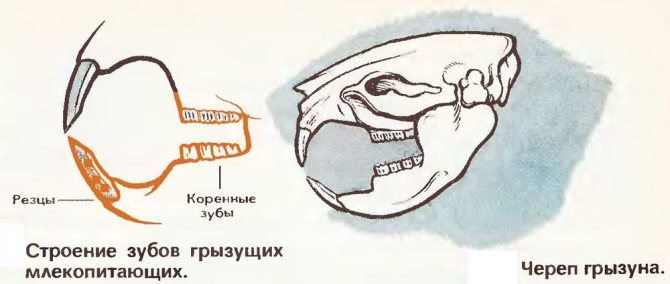

Obviously, the taste characteristics of this building material are unattractive to rodents, but nevertheless it is of interest to them. Most often this happens during the search for food and trying to get into the living quarters.
What kind of insulation do mice and rats like?
All thermal insulation materials can be schematically divided into two groups. The first includes insulation, which rodents use as a nest or for boring teeth. The second group includes building materials that are absolutely of no interest to rodents.
If you plan to use heaters from the first group, then you should take care of their additional protection.
The main parameter by which rodents choose housing for themselves is that the material should have a low density, be warm and dry.
Heaters favorite by rodents include:
- Styrofoam;
- Pepoplex;
- Mineral wool;
- Chipboard plates;
- Penoizol.
Styrofoam
Polyfoam is most often used when carrying out work on the insulation of premises. Such popularity is due to the lightness of the material, affordable cost and does not cause problems during installation work. The material also fell in love with rodents.
If rodents enter the home, the foam may not be enough for several seasons
The animals will gnaw through the insulation, and then arrange a place for their home. In addition, rodents crumble the material into small fractions and use the pieces to insulate their nests.
Some owners of private houses are trying to control pests by laying various poisons right under the sheathing. This method of struggle is rather controversial, since the rodent can die right in the insulation, and the decaying body will cause an unpleasant odor in the house. To remove the corpse, you will have to dismantle the structure.
Penoplex
Extruded polystyrene foam is a modern type of conventional foam.It differs from the base material by improved characteristics of resistance to high air humidity. The material is used for insulation of residential and industrial premises. It is widely believed that due to its high density and strength, rodents avoid it, but this is not true. Mice and rats destroy Penoplex just as readily as regular Styrofoam.
Penoplex, like polystyrene, does not eat rodents, but they use material to build a nest.
Rodents do not eat Penoplex, but they violate its thermal insulation properties
Remember that penoplex, which has been damaged, almost completely loses its thermal insulation characteristics, and restoration of insulation will require significant physical and financial costs from the owner of the house.
Mineral wool
Despite promises from manufacturers that rodents do not use mineral wool to build their nests, the use of insulation will not help protect the house from pests.
Rodents not only use mineral wool to build their homes, but they also wind up in this insulation much more often than in many others. Experts have found that in mineral wool, rodents create the most optimal and close to natural conditions for permanent residence.
The material has huge advantages over other insulation, however, resistance to rodents cannot be attributed to its advantages.
Mineral wool has excellent sound insulation characteristics, so you won't even hear rodents inside
Chipboards
If you decide to insulate the house with chipboard plates, then you should think in advance about how to protect the material from rodents. Like all similar materials, chipboard boards are made on the basis of wood, and therefore will not become a serious obstacle on the way to penetration into the dwelling for mice and rats.
Penoizol
There is an opinion that, unlike foam, the liquid material penoizol is too tough for mice and rats, but this is a fairly common misconception.
You can do a simple experiment - just seal the mouse hole with this insulation and wait a while. The material will not become an obstacle in the path of the rodent, since very soon a hole will appear in it.
In the casing, passages are created to quickly move around the house. It is interesting that rodents also do not use penoizol to equip their home, preferring other materials.
Penoplex and mice: what to expect
The material does not contain useful substances and is not very hard, therefore it is not of interest as food and is not used for grinding food in the stomach. Moreover, the digestive tract of rodents differs from similar organs in birds, and they do not need an additional stimulator.
However, mice gnaw penoplex, and this is an undoubted fact. What is the reason for this situation? Oddly enough, in the advantages of the material: affordable price and porous structure. Due to its low cost, penoplex is the most demanded thermal insulation material, and the lack of rigidity contributes to tooth damage to rodents. They cut entire tunnels in the slabs, destroying their integrity and degrading thermal insulation. To prevent this, drastic measures are needed.
If they already live?
In this case, you should not hope that the rodents will leave by themselves. Getting rid of mice and other rodents is a two-step process. First of all, you need to eliminate the source of their appearance. Perhaps it is a trash can, because of which mice can live near the house or uncovered edible supplies in the house. In general, everything that pests can drink.
When the source is eliminated:
- Disassemble the insulation cake;
- Remove damaged parts;
- Restore the insulation layer;
- Take care of protection for the future.
Although, it is clear that there can be no miraculous solution to the problem. Therefore, many decide, either at the stage of replacement or construction, to choose one of the options that are not interesting to pests.
How to protect an insulated house from rodents
It is pointless to talk about how to get rid of mice with the help of rat poisons and all kinds of mousetraps, especially when they live in the thickness of the outer walls. The best way to preserve the integrity of the thermal insulation structure is to keep the mouse out of the house, although a 100% guarantee cannot be achieved. What is recommended to do:
- Try to build houses from warm structural materials - aerated concrete or wood concrete. If the required wall thickness is maintained, then they will not have to be insulated.
- For thermal insulation of roof slopes and ceilings, use dense basalt wool or fill the attic with expanded clay.
- To protect polymer and other soft insulation, the foundation and basement of the house must be enclosed in a fine zinc-coated steel mesh.
- Make a basement ebb in the form of a metal canopy around the building perimeter. He will not let the mouse climb up the wall to the roof.
- Install an ultrasonic repeller in your attic.
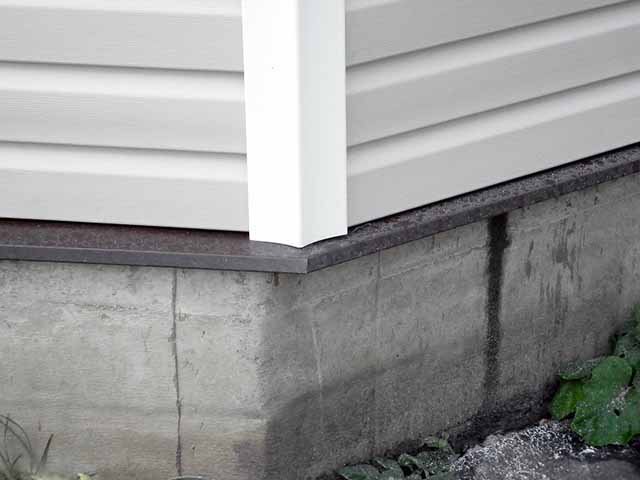

It is quite difficult for the animals to overcome such an overhanging visor.
Also, do not refuse the help of smaller brothers - domestic cats. For a successful hunt, they need to provide access to closed cavities, the attic and the basement, not forgetting to remove all mousetraps. More information about protective equipment is described in the video:
Types of insulation that mice do not eat
In the modern building materials market, there is a huge variety of insulation materials in which rodents are not able to start. So what kind of insulation don't mice eat?
- Foam concrete. This material is environmentally friendly, lightweight, porous and rigid. In it, animals simply cannot gnaw their own mink. Constructions made of foam concrete are warm, reliable and durable.
- Expanded clay. The material is durable and practical, not subject to combustion. It is made from special types of clay. The structure of expanded clay consists of small granules, the size of which reaches 1 - 40 mm. Insulation is mounted on walls and ceilings located between floors. It is quite problematic for mice to start in such material, since there is not enough air there, and small particles can enter the respiratory tract of animals.
- Ecowool. The manufacture of such material is associated with the use of orthoboric acid, which leads to lung damage, dehydration and death of parasites. Insulation is completely safe for humans, therefore it is used to isolate internal and external surfaces. Ecowool retains heat well, does not burn, and serves for more than 50 years. The material does not rot, does not decompose, does not emit toxic substances.
- Foam glass. This is another insulation that rodents will not eat. It is made of carbon black and foamed glass. The positive properties of the material do not deteriorate even after long-term use.
Do mice eat penoplex
Rodentologists (scientists who study various rodents) can explain if mice gnaw Penoplex. Experts say that any representatives of mice can easily gnaw through this insulation if it gets in their way.
Penoplex for the mouse is an obstacle that needs to be removed in order to get to the supply of food and water.
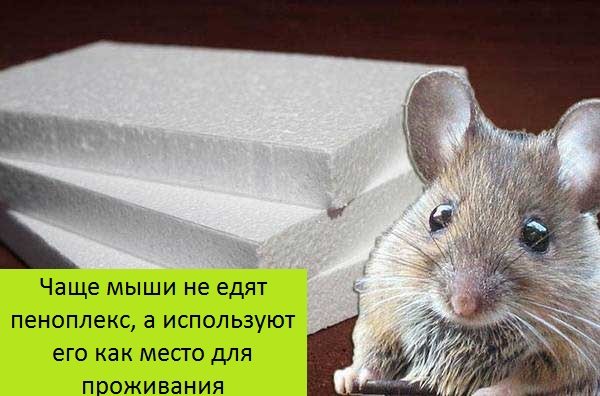

And in order to understand whether mice eat Penoplex, you need to understand their food addictions. Rodents feed on organic matter, and penoplex is far from organic.
If the pest does not consider the insulation as an obstacle, then it may well draw attention to it as a cozy home. Often, penoplex becomes a place for creating their nests.
Protecting Styrofoam from Pests
Polyfoam is a very convenient material for thermal insulation and sound insulation.But it is the various foams that are most susceptible to attack from mice and rats. These are materials such as extruded polystyrene foam, polyurethane foam, penoizol, penoplex. These materials are artificial, therefore they are not suitable for food for mice, but they gnaw them and turn them into dust. In the resulting voids, rodents make their own nests. To protect it from rodents, certain measures must be taken:
- It is necessary to choose dense foam for insulation, since it is inconvenient for mice to gnaw on dense material.
- Correct installation of the foam is required. It must be carefully putty and sheathed with special materials selected individually. The purpose of correct installation is to prevent the appearance of cracks, since rodents penetrate into the dwelling precisely through the cracks.
- All holes must be sealed with polyurethane foam.
- It is advisable to provide metal cladding along all walls at the level of penetration of pests. They will not be able to cope with metal.
These measures must be envisaged even at the construction stage. If they were not accepted, it remains to take actions aimed at scaring away rodents:
- The easiest way is to get a cat. The smell of cats in the house alone scares off mice.
- You can install an electronic scarer, but if the area of the house is large, one device will not be enough, you will have to install several. Such scarers emit ultrasound of various frequencies, which causes fear in rodents and forces them to leave the building.
- All food supplies must be kept out of the reach of rodents.
- The home must be kept clean.
Folk remedies are effective to protect the foam. They are based on the use of various plants that scare off rodents with their smell. These are plants such as pine needles, tobacco, mint, wormwood. When dried, these plants can be simply scattered in the corners. During the construction phase of the house, you can process the foam with lime or red pepper.
Some use boric acid to repel pests, but its effectiveness in controlling rodents has not been proven.
If none of the above methods helps, you need to contact the sanitary and epidemiological station, whose employees will come and carry out a complete disinfection of the premises and the elimination of all rodents.
Source: svekrovi.net
We consider thermal insulation materials
To find out the "preferences" of rodents regarding various heaters, you need to know a simple rule: in search of a place for a nest, the mouse will follow the path of least resistance and begin to gnaw on softer material. First of all, we will compile a list of insulators used to improve the energy efficiency of residential buildings:
- solid natural materials - expanded clay, vermiculite, foam glass;
- blocks of foam and aerated concrete, wood concrete;
- artificial polymers - polystyrene, foamed polyethylene and polyurethane, extruded polystyrene foam (aka Penoplex);
- building materials based on glass and basalt fibers - mineral and glass wool;
- new cellulose insulation - ecowool.
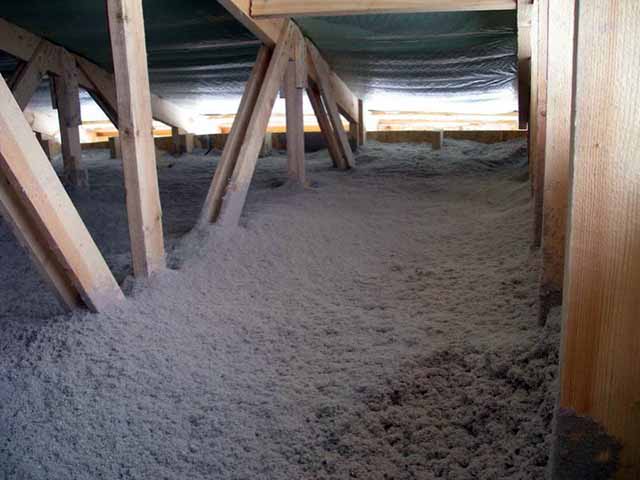

It looks like ecowool insulation
Note. For obvious reasons, rarely used perlite concrete products and any fibreboard are not included in the list.
The ability to resist the attack of pests is influenced by 3 characteristics of the thermal insulation product: density, chemical composition and flowability. On these grounds, we will consider all types of insulation.
Vermiculite and expanded clay
These two building materials, and even foam glass, are the best protection against rodents. Their main trump card is their high density and flowability, which does not allow making a hole. The main condition is that the insulating layer must be well compacted so that the gaps between the stones are minimal. Solid blocks of foamed glass cannot be gnawed due to their hardness.
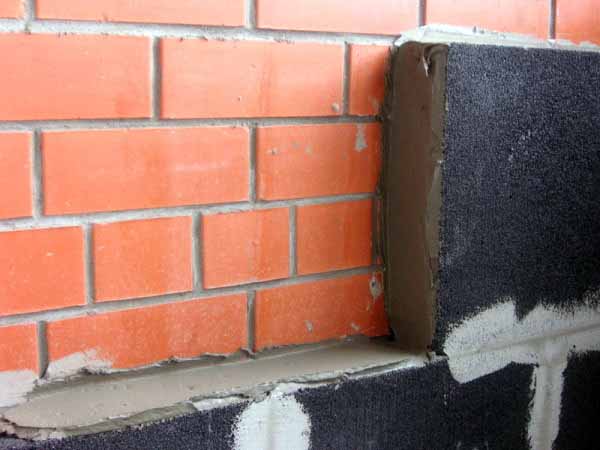

Paneling made of foam glass
The characteristics of the heaters look like this:
- The density of expanded clay gravel is from 200 to 800 kg / m³, depending on the size of the fraction, thermal conductivity - 0.11-0.21 W / (m • K).
- Vermiculite crushed stone has a density of 250 kg / m³ with a thermal conductivity of 0.13 W / (m • K).
- Indicators of foam glass, respectively, 160 kg / m³ and 0.06 W / (m • K).
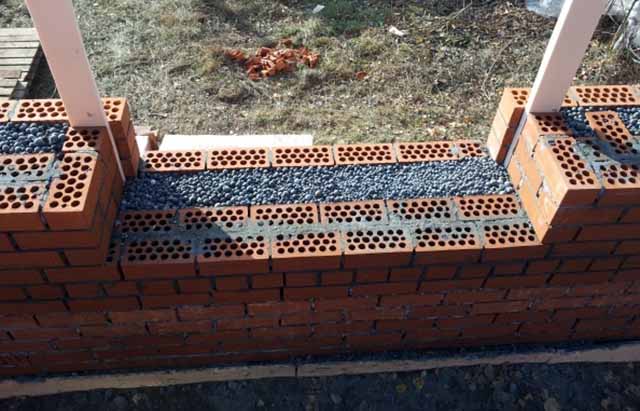

A layer of expanded clay inside the wall leaves no chance for pests
Mice do not eat expanded clay with vermiculite and all products based on them, for example, expanded clay concrete. Another thing is that the thermal insulation properties of these materials are low, and the mass is large. To replace 100 mm of foam with a thermal conductivity of 0.04 W / (m • K), you need to fill in a layer of expanded clay gravel at least 30 cm, which too increases the thickness and weight of the structures. Foam glass insulation is effective, but not cheap.
The following conclusion suggests itself. These materials provide almost 100% protection against mice, but are impractical or expensive to use. This is why they are inferior in popularity to the next category.
Lightweight concrete blocks
Theoretically, mice are able to gnaw through foam blocks and wood concrete, but they do this extremely rarely, since the materials are quite hard and dense:
- wood concrete products - 300-800 kg / m³;
- aerated concrete - from 400 to 500 kg / m³;
- foam block - 600-1000 kg / m³.
In terms of thermal insulation parameters, light blocks are comparable to expanded clay - the thermal conductivity coefficient is in the range of 0.1—0.2 W / (m • K). However, they have one big advantage: block products are structural building materials. That is, it is possible to build external walls from aerated concrete that can carry significant loads. Therefore, in recent years, the popularity of wood concrete and various foam blocks is constantly growing.
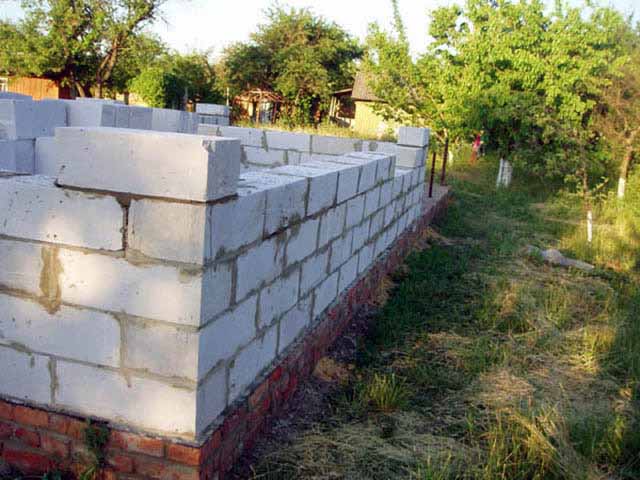

Note. The lower the thermal conductivity of the material, the better its insulating properties.
Polymer heaters
When asked whether mice gnaw on styrofoam, the answer has long been received: definitely yes. It so happened that products with the best heat conductivity - 0.04-0.045 W / (m • K) have a low density - from 15 to 35 kg / m³. Therefore, rodents with great pleasure settle inside polymer plates at the slightest opportunity.
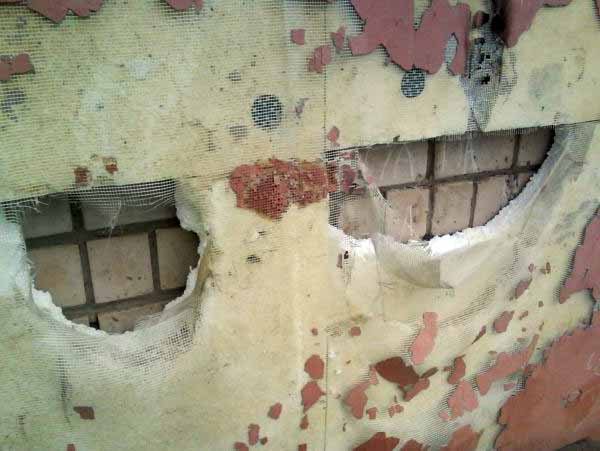

The same answer awaits homeowners wondering if rodents eat expanded polystyrene (aka Penoplex). Since its hardness and density, equal to 30-50 kg / m³, is greater than that of polystyrene, mice are not so willing to make holes in it. But the thermal characteristics of the material are even more attractive - 0.037 W / (m • K), and gray pests feel it. Especially for skeptics, we will demonstrate a photo of a polystyrene sheet with a mouse mink.
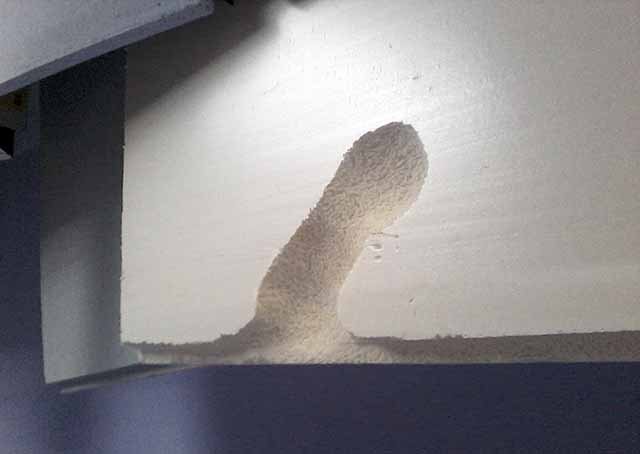

The animal has just begun to gnaw through a mink in one of several sheets folded in a pile.
The attitude of rodents to polyurethane foam and foamed polyethylene is similar - if necessary, they arrange nests in these heaters. Hence the conclusion regarding all polymers: it is unacceptable to give up light and energy-efficient materials because of mice, but you will have to think carefully about how to protect them from spoilage.
Mineral wool
Basalt and fiberglass products cause the most controversy - some users claim that rodents "love" mineral wool, the other half proves the opposite. It is impossible to refuse the use of these materials for 2 reasons: they absolutely do not burn (excluding glass wool) and let water vapor pass, and therefore they are good "friends" with wooden structures.


In a rolled mineral wool of low density, mice ply freely
Let us present our reasoning in the form of theses:
- The density of mineral wool insulation varies in a wide range - from 40 to 200 kg / m³. Practice shows that mice hardly touch basalt slabs, whose specific gravity is more than 80 kg / m³.
- Unlike previous building materials, the chemical composition of fibrous products includes synthetic binders - carcinogenic formaldehyde-based resins.This makes the product not as "appetizing" as styrofoam.
- Roofing glass wool and rock wool rolls are vulnerable to rodents due to their soft structure. They arrange nests in the material, despite the presence of formaldehyde resins and the smallest glass particles.
- Ecowool, made from cellulose fibers, is susceptible to mouse attacks to the same extent, since it cannot boast of a high density.
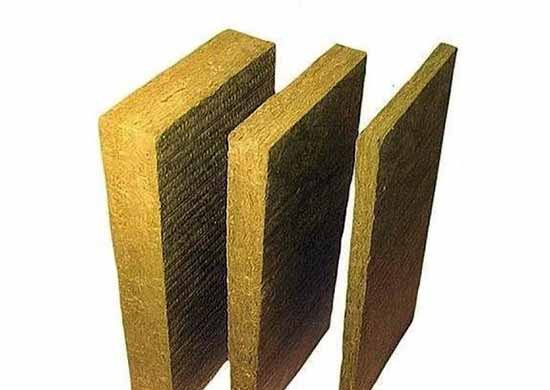

Reference. Ecowool manufacturers claim that they add boric acid to its composition, which prevents the settlement of all kinds of living creatures.
Output. The maximum protection against the penetration of mice will give a slab basalt insulation with a specific weight of 100-145 kg / m³, and it is recommended to use it whenever possible. There are very few cases when such a dense mineral wool was spoiled by pests at the moment.
How to protect the insulation?
Basically, there are two ways to protect thermal insulation from pests:
Moreover, it should be noted right away that the first method is as reliable as a tank. The second is rather a temporary measure in case of storing unused material, although it is also used in finished structures.
Styrofoam and mice. If you build a concrete structure around a heat insulator, for example, foam plastic, that will protect it, no pests will most likely try to gnaw through it. For example, such types of finishing as "Bark beetle" mice and rats do not gnaw very often.
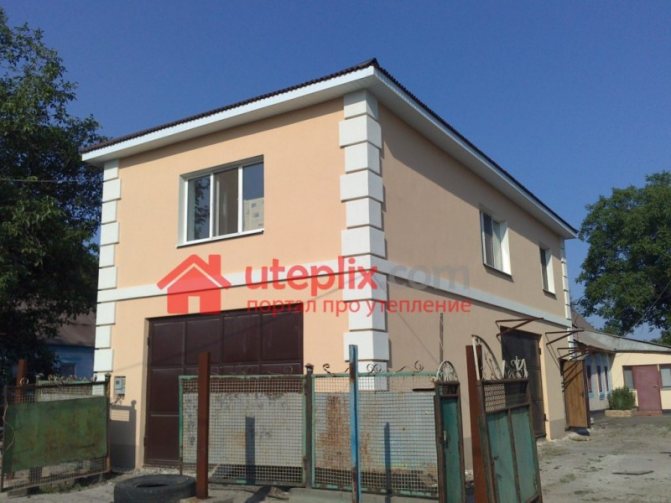

Rodents are becoming a big problem for owners of frame houses. The frame essentially consists of insulation, and it can be protected with a reinforced mesh with a very fine cross-section.
Of the chemicals, folk remedies can be noted, such as:
Rodent-proof insulation. There are cases when, before insulation, the foam is treated with lime or even pepper. But, in fact, only insecticides specially formulated for pest control can help.
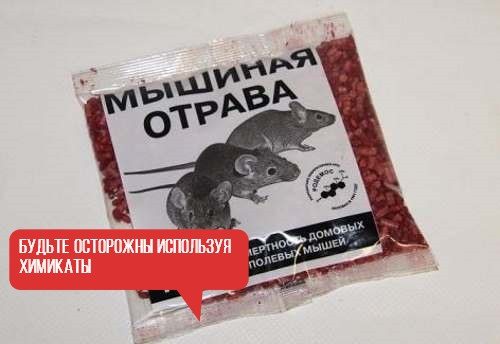

Choosing the second method (chemical agents) to protect the insulation, you agree with all the disadvantages and side effects of the poison. And here it is already someone who decides how: if someone does not even use polystyrene because of its harm to health, most likely only the first of the two methods will suit you.
About the use of heaters
Expanded clay is one of the reliable insulation materials for the house, which retains heat well, absorbs noise, is not flammable and is inedible for rodents. It is made from clay, which is cleaned, wiped, then granules are made from the resulting plastic solution, which are hardened at a certain temperature.
Cooling down, expanded clay becomes lightweight, and at the same time it is durable. It has small, medium and even winged - 10 - 25 mm in size - fractions. Mice and rats cannot exist in such material, since they will drown in the skin of its particles. Expanded clay insulate interfloor and attic ceilings, basements, it is permissible to use it for walls.
Foam glass, which is produced in slabs and in bulk, is also not eaten by rodents. In the loose version, it is similar to expanded clay, it is used to insulate walls, floors, and floors of a house. It is customary to fix the slabs on the walls from the inside or from the outside, lay them on the floor, concrete, bitumen, construction glue or expanded clay, which has small fractions.
Foam glass is made by melting and foaming glass. The material is strong, durable, environmentally friendly, well resistant to moisture and ultraviolet radiation.
Glass wool is a fiber insulation known to many for the home, a type of mineral wool. It has a smaller fiber diameter than basalt wool and 2 - 4 times longer. Glass wool is fireproof, elastic, frost-resistant, resistant to chemicals, breathable, resists the appearance of fungi, is easy to install, and affordable. Glass wool is made from the same raw materials as glass, or glass industry waste.
Ecowool is a fairly new material.Rodents do not like ecowool, because it contains orthophosphoric acid, which causes them to dehydrate and suffocate. Ecowool is made from cellulose, is harmless to humans, antiseptic, fireproof, releases moisture when heated, dampens noise well, does not rot and decompose, and is durable. It is used both inside and outside the house.
Foam concrete is produced in mortar and blocks. Rodents do not eat it either. The blocks are suitable for construction and wall insulation. The composition of the material that is used to insulate the house from the outside or pour the mass into the middle of the masonry during construction includes water, sand, cement and a foaming agent. It is used for thermal insulation of floors and ceilings. Light in weight, environmentally friendly, easy to handle, non-flammable, not subject to decay.
Penoizol is a liquid polystyrene. Spraying on the walls is carried out using a special compressor. Mice and rats chew on this type of foam with pleasure. In ordinary foam, pests make nests and gnaw through the passages.
Extruded polystyrene foam is able to protect the house more reliably than mineral wool or simple foam. It is made by extrusion using a special foil. It is used for external insulation of the building.
Penoplex is resistant to high and low temperatures, exposure to chemicals, possible deformations, resists moisture, transmits light, is environmentally friendly and safe for human health. Extruded polystyrene foam is strong and lightweight, used for thermal insulation, sports fields, ice arenas and refrigeration equipment.
How to avoid trouble and protect your home
You must adhere to the following rules:
Get a cat or a cat. You can take a kitten from the street or a hunting breed, such as the Abyssinian. The desirable color of the animal is striped or variegated. The smell of a cat will scare away rodents. It is necessary to keep food in inaccessible places, do not leave food leftovers on the table, and thoroughly clean the rooms on a regular basis. Styrofoam must be installed in accordance with all the rules
Mice and rats enter the house through cracks, so it is important to use polyurethane foam to seal them. Spackle the polystyrene just as thoroughly
And then sheathe it using special building materials. For a guarantee, it is worth tightening all walls with a fine mesh. Rodents certainly cannot damage metal. Insulation of dense grades and durable facing material are also difficult for mice. At the time of building a house, it is worth laying a strip foundation. It forms a contour of reinforced concrete beams. Fill broken glass around the perimeter. Boric acid is a poison for gray pests. It is scattered near burrows and around the perimeter of the dwelling. However, if there are animals or children in the house, the acid is prohibited.
Folk remedies include dry use of the following plants: wormwood, chamomile, wild rosemary and elderberry. They are put into bags and placed in the corners of the house and in places close to the habitat of mice. It is worth installing an ultrasonic repeller. The sound emitted by this appliance has a negative effect on rodents. The number of devices directed against mice depends on their range and the area of the house.
Preventive measures
To prevent damage to the insulation, it is recommended to drive out all the mice at the time of building a house or installation work. Getting rid of pests is quite difficult. The problem is complicated by the fact that they scatter throughout the house, including in hard-to-reach places.
The most popular option is rodent poison.
The poison entails mass death of individuals, the corpses of which subsequently provoke an unpleasant odor.
Penoplex often becomes a refuge for animals that can die in it. Therefore, you can pickle before installing the material. It takes a long time to get rid of the classic method - mousetraps.It may take more than one month.
Mice mainly make their way into the house through the foundation and lower floors, so it is necessary to put protection in the form of reinforced nets, metal sheets, concrete and other dense material that animals cannot gnaw. These measures can save the house from a recurrence of pest attacks, as well as a guarantee of the preservation of the insulation.
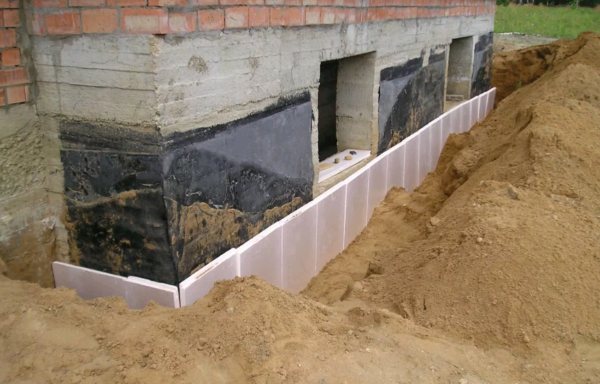

Another method of protecting insulation from rodents is to choose a material that is unattractive to mice.
If mice are already in the house, then the following measures are taken:
- Use one of the above methods to get rid of pests;
- Dismantle the lower insulation blocks and check the presence of animals;
- Replace old blocks with new ones;
- Use barrier methods of insulation protection.
Rodents are found not only in private houses, they can be found even on high floors of high-rise buildings. Therefore, if the walls of the apartment are sheathed with siding and insulation, then there is a high probability of the presence of animals in the penoplex.
